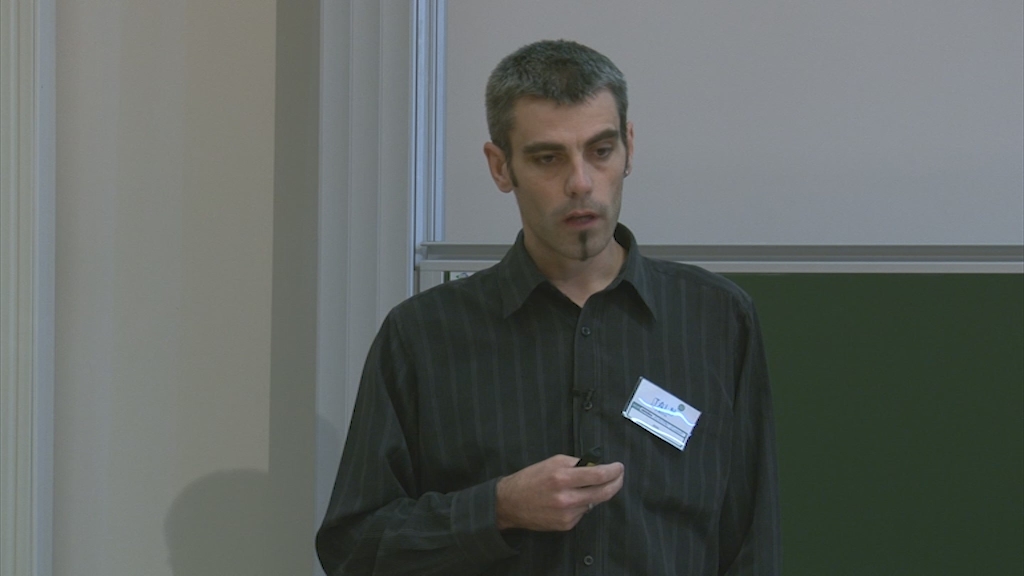Notice
05a - Apprentissage par imitation pour l’étiquetage de séquences : vers une formalisation des méthodes d’étiquetage easy-first (taln2015)
- document 1 document 2 document 3
- niveau 1 niveau 2 niveau 3
Descriptif
Sessions orales TALN 2015 – Mardi 23 juin 2015
Session Extraction d’information
Apprentissage par imitation pour l’étiquetage de séquences : vers une formalisation des méthodes d’étiquetage easy-first
Elena Knyazeva, Guillaume Wisniewski et François Yvon
Résumé : Structured learning techniques, aimed at modeling structured objects such as labeled trees or strings, are computationally expensive. Many attempts have been made to reduce their complexity, either to speed up learning et inference, or to take richer dependencies into account. These attempts typically rely on approximate inference techniques and usually provide very little
theoretical guarantee regarding the optimality of the solutions they find.
In this work we study a new formulation of structured learning where inference is primarily viewed as an incremental process along which a solution is progressively computed. This framework generalizes several structured learning approaches. Building on the connections between this framework and reinforcement learning, we propose a theoretically sound method to learn to perform approximate inference. Experiments on four sequence labeling tasks show that our
approach is very competitive when compared to several strong baselines. Structured learning techniques, aimed at modeling structured objects such as labeled trees or strings, are computationally expensive. Many attempts have been made to reduce their complexity, either to speed up learning and inference, or to take richer dependencies into account. These attempts typically rely on approximate inference techniques and usually provide very little theoretical guarantee regarding the optimality of the solutions they find.
Dans la même collection
-
05d - Identification de facteurs de risque pour des patients diabétiques à partir de comptes-rendus…
Sessions orales TALN 2015 – Mardi 23 juin 2015 Session Extraction d’information Identification de facteurs de risque pour des patients diabétiques à partir de comptes-rendus cliniques par des
-
05c - Stratégies de sélection des exemples pour l’apprentissage actif avec des CRF (taln2015)
Sessions orales TALN 2015 – Mardi 23 juin 2015 Session Extraction d’information Stratégies de sélection des exemples pour l’apprentissage actif avec des CRF Vincent Claveau et Ewa Kijak Résumé
-
05b - Oublier ce qu’on sait, pour mieux apprendre ce qu’on ne sait pas : une étude sur les contrain…
Sessions orales TALN 2015 – Mardi 23 juin 2015 Session Extraction d’information Oublier ce qu’on sait, pour mieux apprendre ce qu’on ne sait pas : une étude sur les contraintes de type dans les
Sur le même thème
-
Ce que la TAN et l'IA générative veulent dire pour la division du “travail du texte” en SHS
BurlatLisonLison Burlat, éditrice à la MSH Paris-Saclay, présente ici des éléments de réflexion sur les conséquences de la traduction automatique neuronale et de l'intelligence artificielle sur le travail du
-
Traduire en sciences humaines et sociales : interroger le bouleversement des pratiques et des condi…
Van EffenterreMarieMarie Van Effenterre est traductrice indépendante et co-présidente de l'Association pour la traduction en sciences sociales (ATESS). Elle s'interroge ici notamment sur les effets que la traduction
-
HTAL : de la collecte au dépôt
LéonJacquelineFaivreCamilleLe projet HTAL, Histoire du traitement automatique des langues est un fond inédit, composé d'environ 1000 documents. Jacqueline Léon, directrice de recherche émérite au CNRS, les a collectés tout au
-
Rédiger et traduire des métadonnées pour un article : suivez le guide !
Présentation en vidéo du guide "Rédaction et traduction des métadonnées" à destination des auteurs et comités éditoriaux de revues afin d'améliorer le référencement des publications à l'international.
-
Table ronde - Salon PAREIL
JEP-TALN-RECITAL 2016 - Vendredi 8 juillet 2016 Salon PAREIL (Partenariats Recherche et Industries de la Langue) Table ronde Animée par Pierre Zweigenbaum Résumé : La table ronde est centrée les
-
Bilinguismes et compliance phonique
JEP-TALN-RECITAL 2016 - Vendredi 8 juillet 2016 Session commune JEP/TALN 3 Bilinguismes et compliance phonique Marie Philippart de Foy, Véronique Delvaux, Kathy Huet, Myriam Piccaluga, Rima Rabeh and
-
Conférence invitée de Mark Liberman - From Human Language Technology to Human Language Science
LibermanMarkFrom Human Language Technology to Human Language Science
-
Traduire deux Nobel de littérature, Gao Xingjian et Mo Yan
Baryosher-ChemounyMurielDutraitNoëlNoël DUTRAIT est professeur au département d’études asiatiques en langue et littérature chinoises à l’Université d’Aix-Marseille où il dirige l’équipe de recherche sur les « Littératures d’Extrême
-
04a - Grammaires phrastiques et discursives fondées sur TAG : une approche de D-STAG avec les ACG (…
Sessions orales TALN 2015 – Mardi 23 juin 2015 Session Syntaxe et paraphrase Grammaires phrastiques et discursives fondées sur TAG : une approche de D-STAG avec les ACG Laurence Danlos,
-
06b - Attribution d’Auteur : approche multilingue fondée sur les répétitions maximales (taln2015)
Sessions orales TALN 2015 – Mardi 23 juin 2015 Session Classification et Alignement Attribution d’Auteur : approche multilingue fondée sur les répétitions maximales Romain Brixtel, Charlotte
-
09c - Déclasser les voisins non sémantiques pour améliorer les thésaurus distributionnels (taln2015)
Sessions orales TALN 2015 – Mardi 23 juin 2015 Session Sémantique Déclasser les voisins non sémantiques pour améliorer les thésaurus distributionnels Olivier Ferret Résumé : La plupart des
-
02b - Multi-alignement vs bi-alignement : à plusieurs, c’est mieux ! (taln2015)
Sessions orales TALN 2015 – Mardi 23 juin 2015 Session Traduction Multi-alignement vs bi-alignement : à plusieurs, c’est mieux ! Olivier Kraif Résumé : Dans cet article, nous proposons une
















